The upcoming US non-farm payroll report is set to capture the market’s full attention today, with investors seeking signs that could affirm Fed’s interest rate has already peaked. In light of Fed Chair Jerome Powell’s comments this week emphasizing the need for “some slower growth and some softening in the labor market” to stabilize prices, the details of the job data, particularly wage growth, will be under intense scrutiny.
The market consensus pegs the headline growth of employment at 172k for October, a significant decrease from September’s robust 336,000 figure. Unemployment rate is projected to hold steady at 3.8%, with average hourly earnings expected to notch up by 0.3% mom.
Preceding indicators present a mixed picture: ISM Manufacturing employment showed a notable decline 51.2 to 46.8, ADP reported a modest private employment increase of 113k that fell short of expectations, and initial unemployment claims hovered around the 210k mark on a four-week moving average, indicating stability.
Wage growth emerges as the unpredictable factor in the equation, with the potential to sway Fed’s monetary policy direction. This data point has been particularly scrutinized for inflationary signals and the possibility of triggering another rate hike.
Equity markets have reflected a sense of optimism this week, with strong rebound in DOW and other major indexes. DOW’s correction from August high at 35679.13 could have already concluded at 32327.20. To further strengthen the case, DOW will need to break through 34147.63 resistance decisively. However, rejection by 34147.63 will retain near term bearishness for another decline through 32327.20.
The impending non-farm payroll report could be a critical determinant of the market’s direction in the closing months of the year.




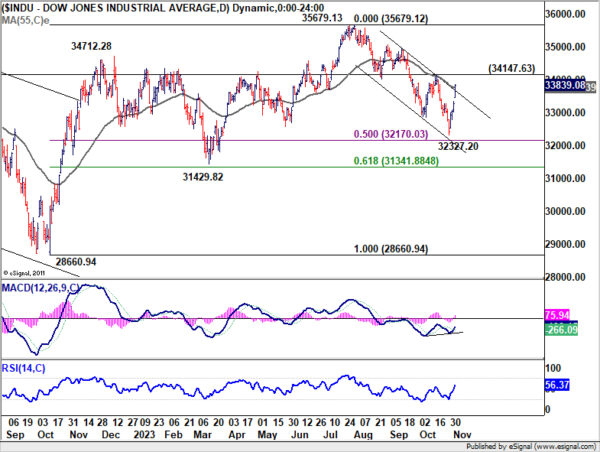
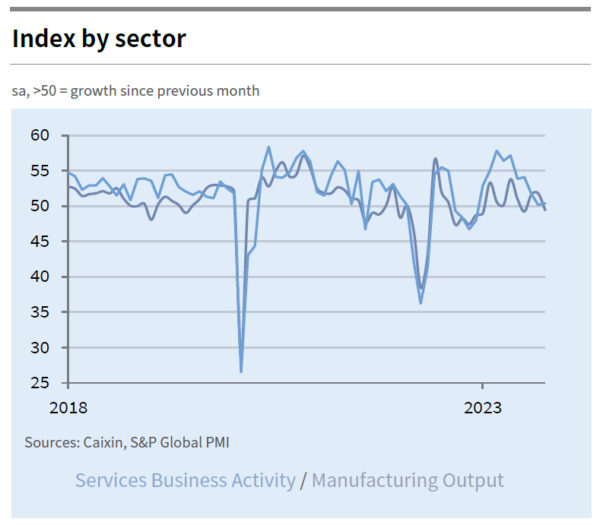
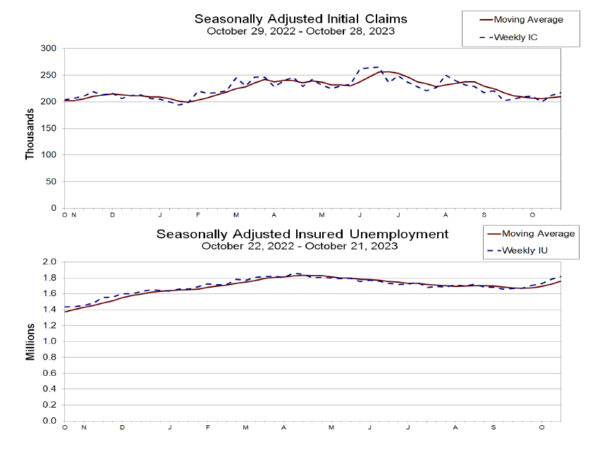
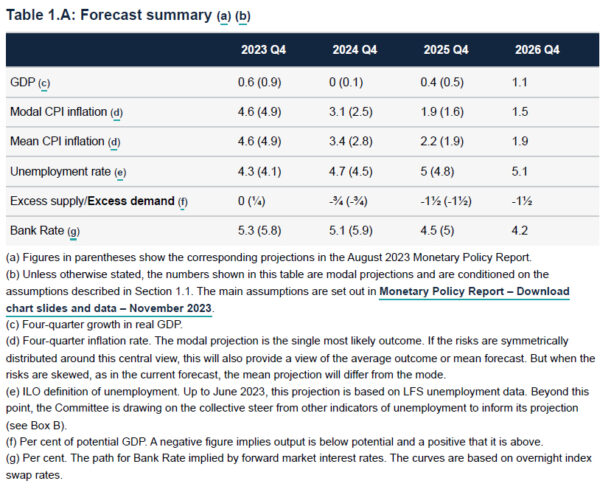
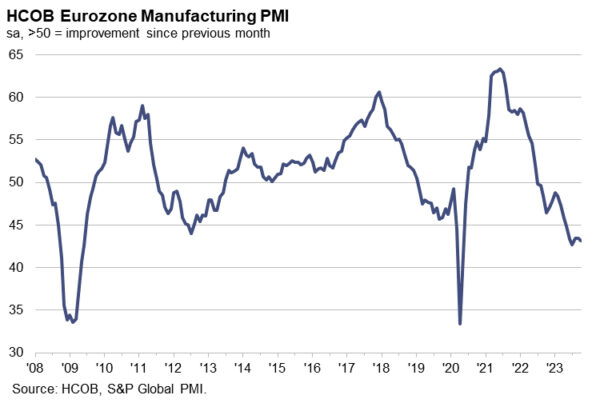
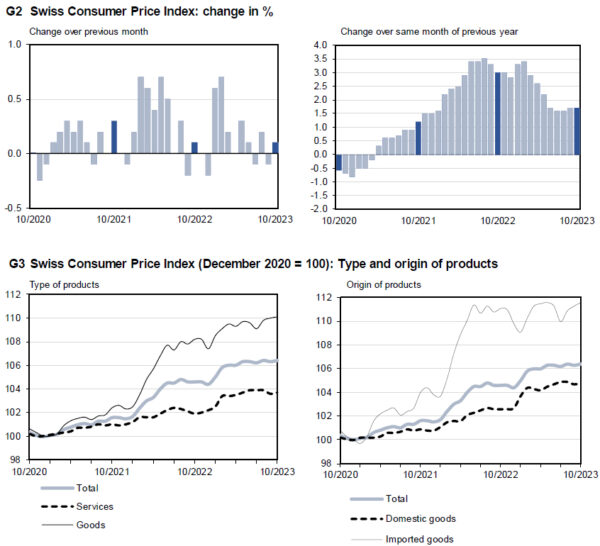
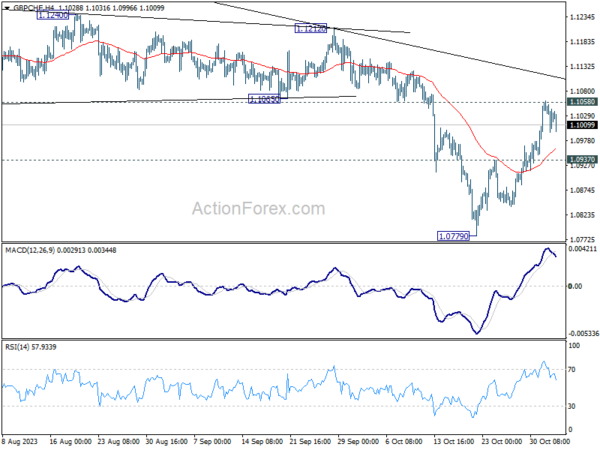
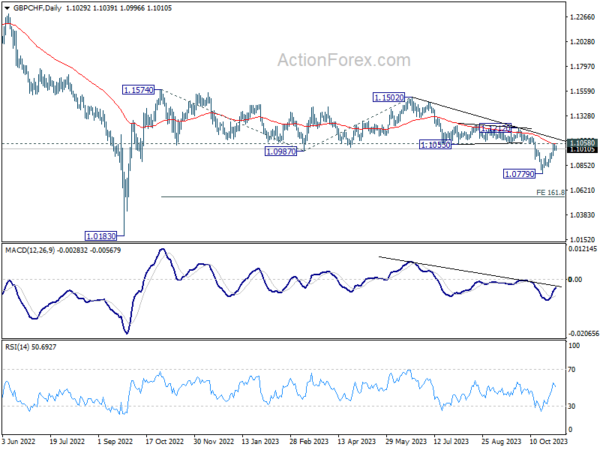
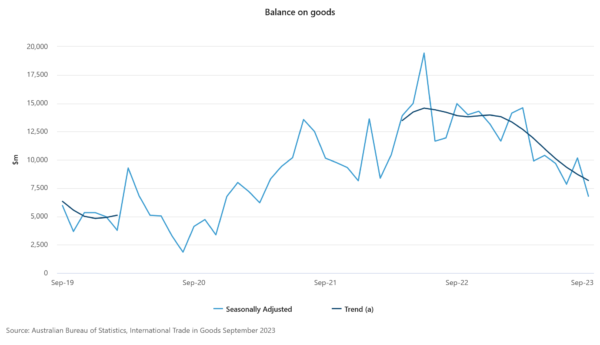
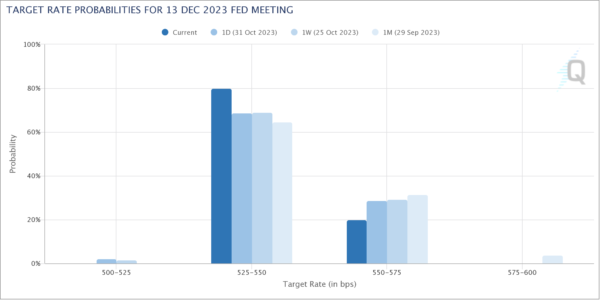
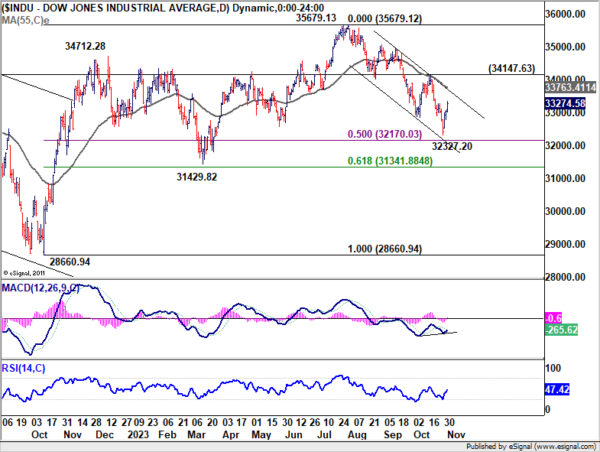
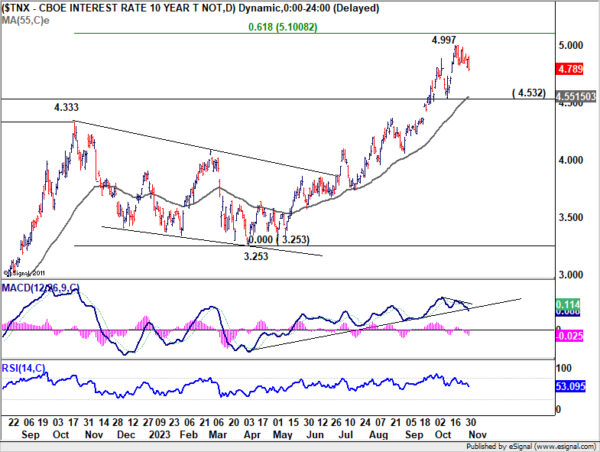

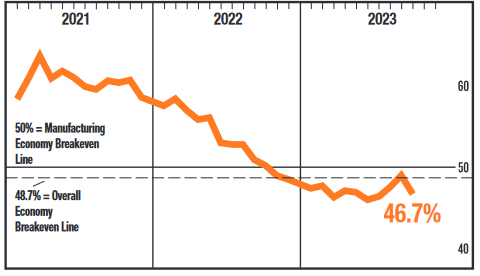
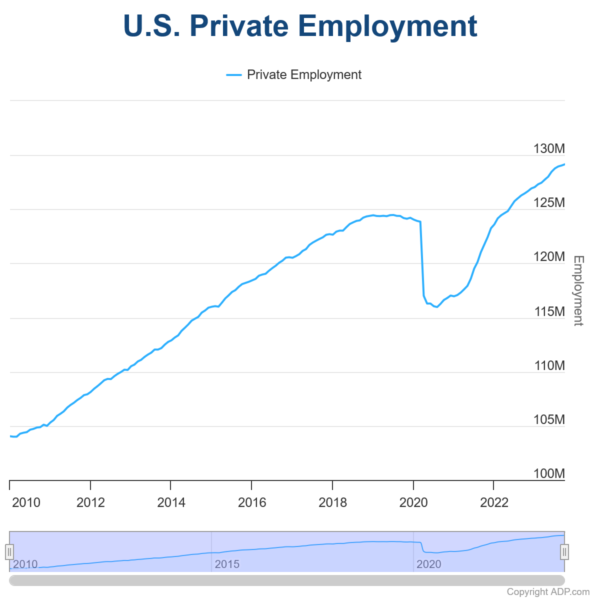
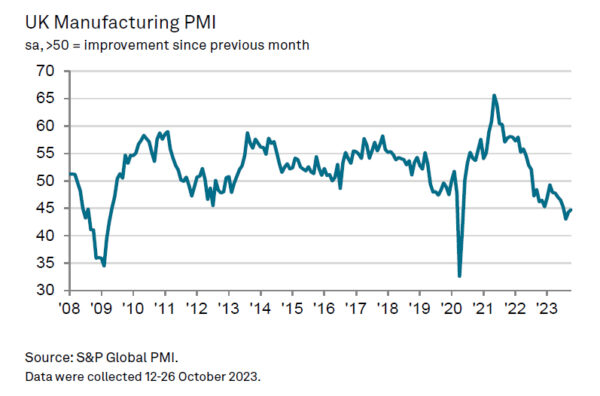
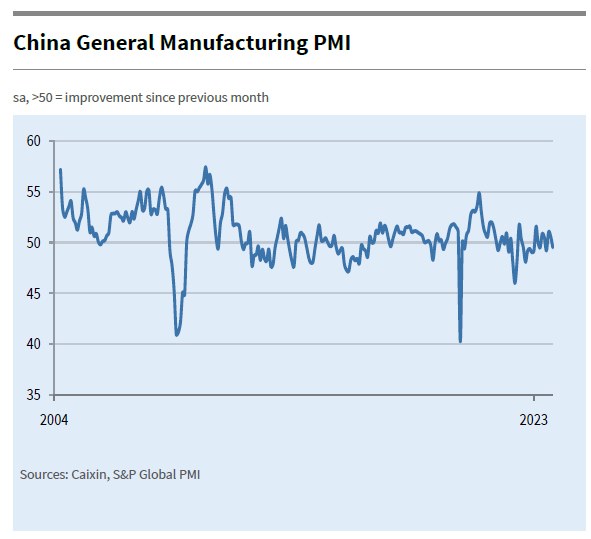
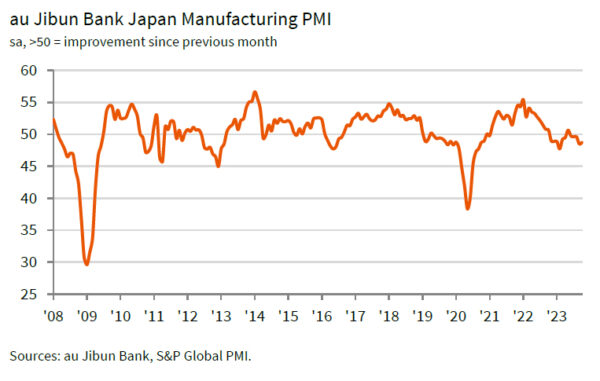

UK PMI services finalized at 49.5, shallow downturn persists
UK PMI Services index was finalized at to 49.5 in October up fractionally from 49.3 in September, lingering in contraction territory for the third consecutive month. PMI Composite showed a minor improvement to 48.7 from an 8-month nadir of 48.5
Economics Director at S&P Global Market Intelligence, Tim Moore, highlighted, “A shallow downturn in UK service sector activity persisted in October as businesses struggled to make headway against a backdrop of worsening domestic economic conditions and stretched household budgets.”
The outlook remains cautious at best. “Forward-looking survey indicators suggested that service providers will continue to skirt with recession,” said Moore, noting that business optimism has dipped to its lowest point of the year.
On the brighter side, there was a silver lining with a slight uptick in new export sales. Furthermore, input cost inflation showed signs of easing, reaching its softest point in over two years due to reduced raw material prices and supplier discounting.
Nevertheless, this hasn’t stopped businesses from hiking prices. “Higher wages and fuel bills were still passed on to clients, which resulted in the strongest increase in average prices charged inflation for three months,” Moore explained.
Full UK PMI services release here.